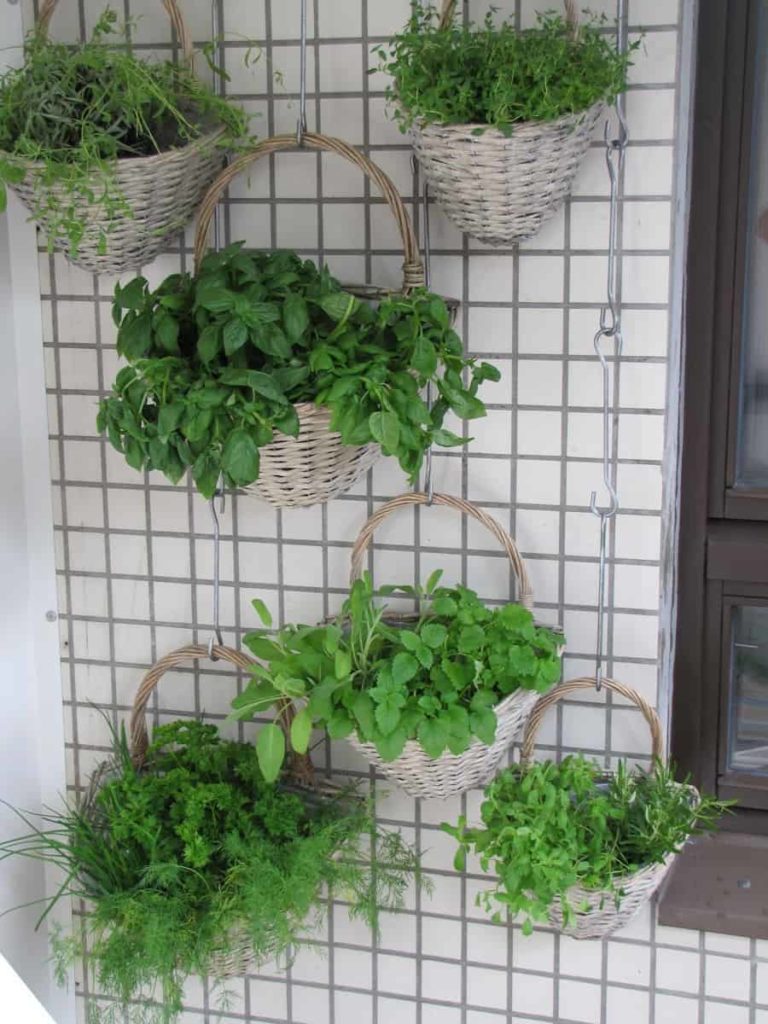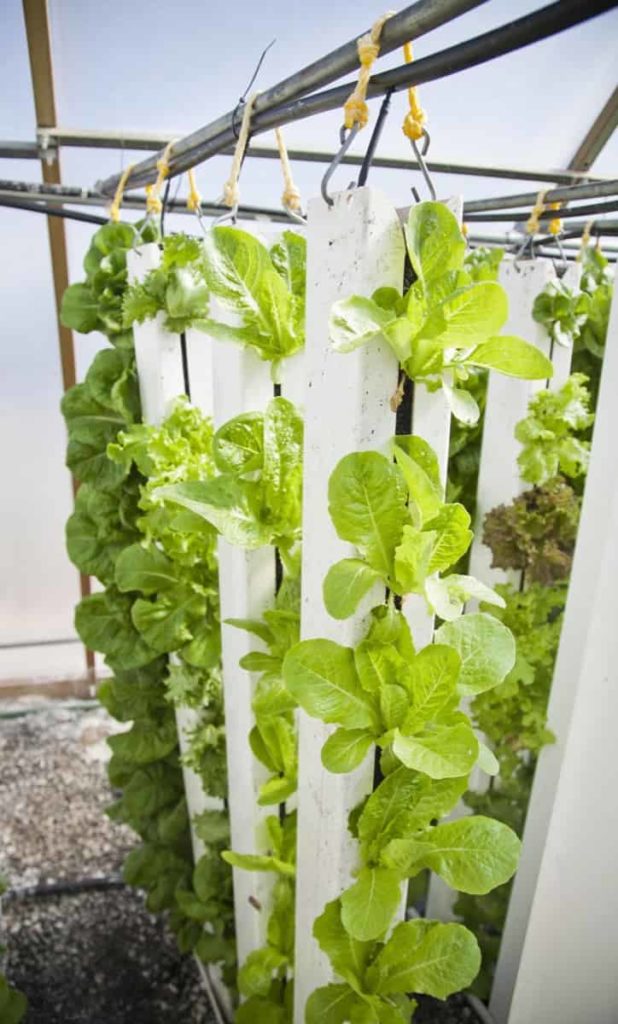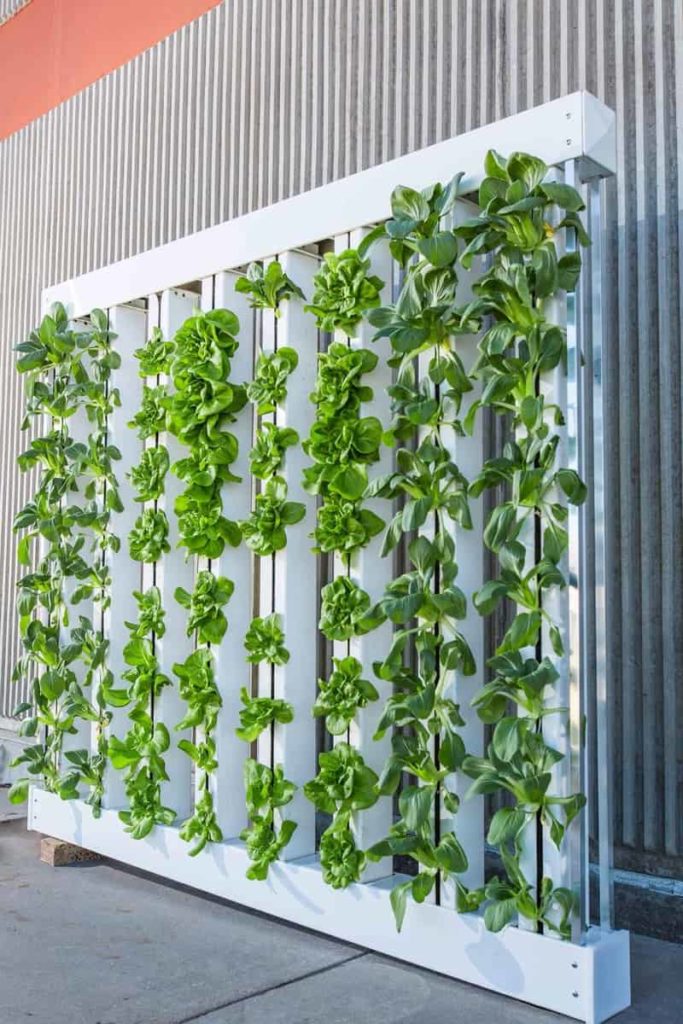Vertical farming is the process of growing produce in vertically stacked layers. The practice can use soil, hydroponic, or aeroponic growing methods. Vertical farms attempt to produce food in difficult environments, such as where arable land is scarce or unavailable. It is considered a highly efficient and sustainable way of food production.
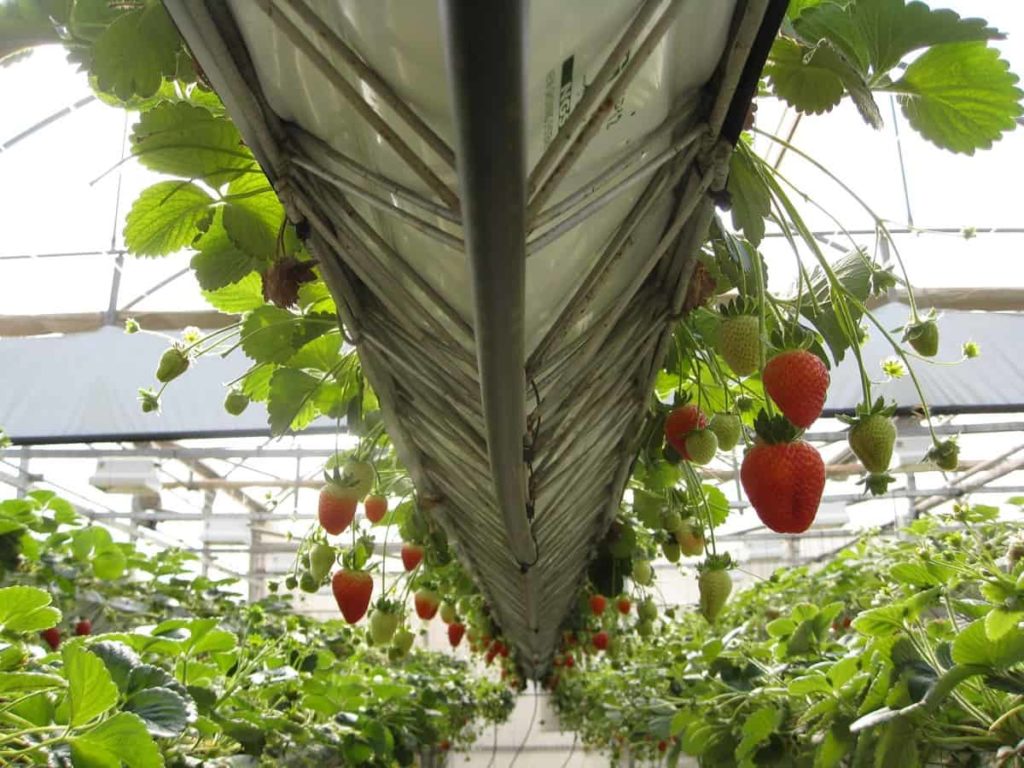
Automation is the key to this efficiency. The natural advantage of vertical farming when it comes to being more profitable than conventional farming is the ability to eliminate pest damage. As well as saving money by not buying pesticides, it also means a much more consistent yield.
17 key rules for effective Vertical farm management
Key rules for the importance of vertical farming
- The advantages are numerous: high production in a very small area; small growing times; less water consumption; fresh produce is very close to where it is consumed, and the food tastes better.
- Year-round productivity and resource efficiency allow vertical farms to provide food for urban areas and meet growing worldwide demand. AI-controlled and automated indoor farms help save money on labor and expensive harvesting machinery.
- Vertical farming plays an important role in reducing the environmental impact of agriculture. It reduces the water and land needed to produce the same or more significant amount of food. It also eliminates the need for long transportation and chemicals and pesticides. According to estimates, about 30% of crops are lost yearly due to spoilage. Second, vertical farms are weatherproof. Because the crops are safe and healthy in a highly controlled environment, the entire crop will not be affected by extreme weather events such as hurricanes, droughts, or floods, unlike outdoor farming.
- Reliable year-round crop production – The most significant advantage of vertical farming is that it is not dependent on the weather, meaning you can achieve consistent crop production throughout the year without worrying about adverse weather conditions’ effects. Which can fall on both quality and profiling of yield and production.
- Cultivation in a safe, well-monitored, and regulated environment brings assurance and peace of mind to growers that provides repeatable, programmable yields.
- Better use of space – Traditional farms require fertile arable land. But vertical farms can be designed and built in any climate or location – regardless of weather conditions or temperature extremes. And because their stacking growth systems allow them to expand upwards, achieving higher productivity in a smaller area is possible. Depending on which crop is grown, an acre of vertical farming can sustainably grow between 10 and 20 soil-based acres.
Effective management for reducing vertical farm production cost
Building costs for new vertical farms and other large-scale indoor models can range from $30 million to $50 million per site. High energy bills and labor costs make it difficult for farms to create a sustainable profit even when facilities are built. Vertical farming maximizes natural resources for optimum crop yield, quality, and availability. Healthy food choices become more accessible, less expensive to grow, and supply chains reach historically underserved communities.
In case you missed it: Vertical Farming in the USA: How to Start, A Step-By-Step Guide for Beginners
Problems that vertical farming is trying to solve for more yield
- Water shortage – Compared to conventional farming, vertical farming uses less than 5% of the amount of water that conventional open field agriculture uses. It uses hydroponics, aquaponics, and aeroponics systems in which water circulates in a closed loop, so nothing is wasted. Since the environment is completely controlled indoors, it is possible to recover water evaporated from plant leaves using a dehumidifier.
- Deforestation – Vertical farming, as the name suggests, grows plants in vertical layers, thus saving a lot of space. Some farms can grow up to 300 times more food per square meter than open field farming. Reduced requirements for space can prevent deforestation. Additionally, the reclaimed space can be used to restore forests lost in the past.
- Access to fresh, healthy food – Agriculture must increase its production rate by 70% while rapidly losing land and resources to sustain the population. Even with productivity improvements every year, this seems impossible. Vertical farming, on the other hand, is much more productive than conventional agriculture.
- Food transparency – Food currently purchased is often produced thousands of miles away and shipped to grocery stores and restaurants. With food grown so far away, it’s hard to know how it’s produced and processed. In addition, long food chain systems are also prone to contamination with food-borne diseases. Vertical farming, on the other hand, is highly localized, so people can have complete food transparency to know how, where, and when their food is grown. Usually, there is an opportunity to come and see a vertical farm and meet the people who grow the food personally.
Key rules for nutrient use in vertical farming
You will need to fertilize your vertical farm weekly or every other week using an organic fertilizer. An organic, water-soluble plant food allows you to easily add nutrients to your green wall when you water it, and it allows you to spray plants with a nutrient-rich mixture. The 3 main nutrients in any fertilizer are nitrogen, phosphorus, and potassium. Nitrogen helps make protein during plant growth, phosphorus is essential for photosynthesis in plant leaves, and potassium is vital for overall plant health. This agriculture relies mainly on biological control to keep pests at bay.
Key rules for the type of lighting used for vertical farming
LED grow lights are the most energy-efficient of the three basic types of grow lights. These sources can be placed away from plants while still producing enough light without using much energy. CFLs are about 50% less efficient than LED grow lights. Heat generation by LED grows lights is close to zero.
Purple LEDs are commonly used in vertical farming today. Purple light is the result of a combination of blue and red wavelengths. Blue lights favor chlorophyll growth, making stems and leaves shorter but thicker. The red color promotes vertical growth and strengthens the fruiting organ. Vertical farmers are turning to LED grow lights as the most efficient artificial lighting. This type of lighting is cheap.
Better management strengths of vertical farming
- Year-round crop production
- Unaffected by adverse weather conditions
- Better use of space
- Minimize water use
- Environment friendly
- No chemicals or pesticides
- Reduce transportation costs
- Extremely energy efficient
In case you missed it: Vertical Gardening Ideas, Techniques, Methods
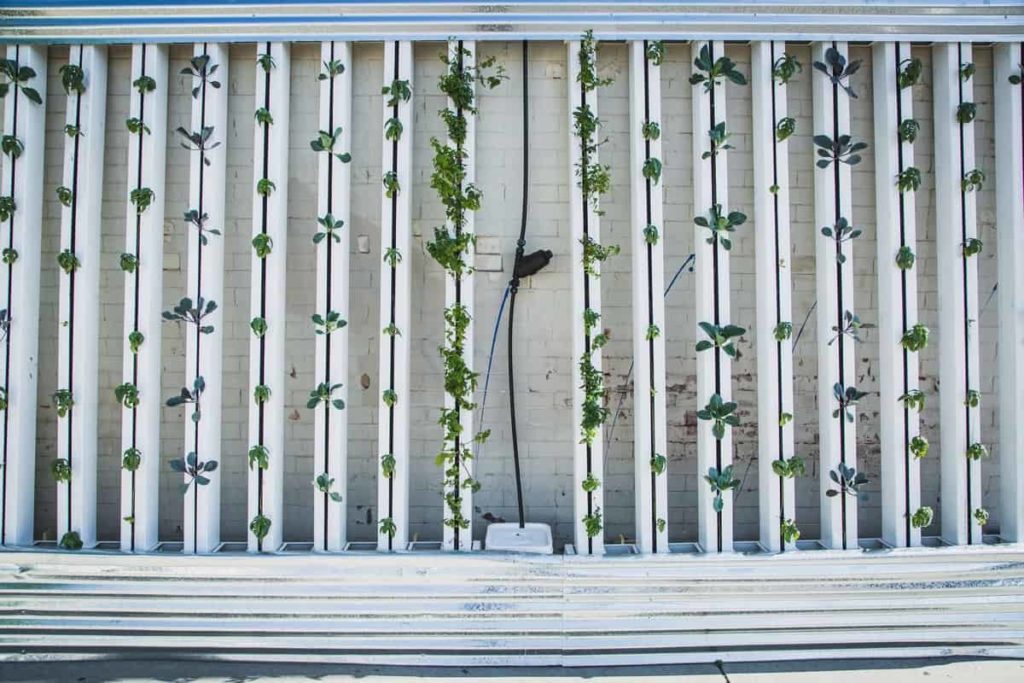
Basic components of vertical farm management
Vertical farm types can be divided into three main components:
- System structure,
- Electrical structure, and
- Plumbing structure
These three aspects are important to consider because they will dictate where a system can be located, what crops can be grown, and what resources will be required to build it. These should be considered before starting vertical farming.
The aim of vertical farming for more production
The main objective of vertical farming is to maximize production with minimal use of natural resources. It promotes sustainable agriculture along with more precision farming than traditional farming techniques. Traditional farms require a lot of land and water, while vertical farming requires a fraction of that with higher yields per acre. Another added advantage is that crops can be produced year-round with vertical farming. Because of their land and plots, one crop can be harvested at a time.
Vertical indoor farms are expensive: controlled-entry clean rooms, well-calibrated grow lights, and machinery for planting and harvesting all cost more than before, not to mention the buildings needed to house the farms. Machine learning, robotics, and automation are also expensive. Vertical farming is a food production practice that forms vertically stacked layers and vertically inclined surfaces. The method is carried out inside a controlled building without soil or natural light. Growing crops on a vertical farm consists of the following elements.
- Temperature control
- Humidity control
- Artificial lighting
- Nutrient and fertilizer control and monitoring
Planning is essential when starting vertical farming as a small to medium business. You must ensure that you can sell what you grow and that your production costs are not too high.
Vertical farming techniques for effective management
Apart from these, three processes are generally adopted in vertical farming systems, namely,
- Hydroponics,
- Aeroponics and
- Aquaponics.
It promises a more sustainable future for growing vegetables in the city. LEDs provide the light for plants to grow, while sensors measure temperature and humidity levels. To produce a crop every month, vertical farms need to control the elements that affect plant growth. These include temperature, nutrients, humidity, oxygen levels, airflow, and water.
Key rules for selecting plants for vertical farming
Vertical farming can be used to grow different plants like vegetables, fruits, herbs, and even flowering plants. However, before choosing plants, it is important to consider the above factors to determine if they will be economically viable. Commercial vertical farming crops commonly grow Lettuce, Microgreens, Kale, Basil, Chives, Mint, and Strawberries.
The most popular vertical farming uses modular towers to grow crops in an aquaponics or hydroponic system. It allows growers to use a volume of space instead of just one vessel. Combined with a good business plan, this vertical farming can take advantage of good markets, unique production, and low operational costs. A key factor in this success is crop selection.
Before deciding on the best crops to grow in your system, you should first consider four major factors:
- Pricing and markets
- Climate and conditions
- Location and techniques
- Pest risks
Some examples of good crops for vertical farming are Bok Choy, Lettuce, Chard, Kale, Fennel Basil, Chives, Mint, Parsley, and Strawberries.
In case you missed it: Growing Strawberries Vertically from Scratch: Methods, Tips, and Ideas
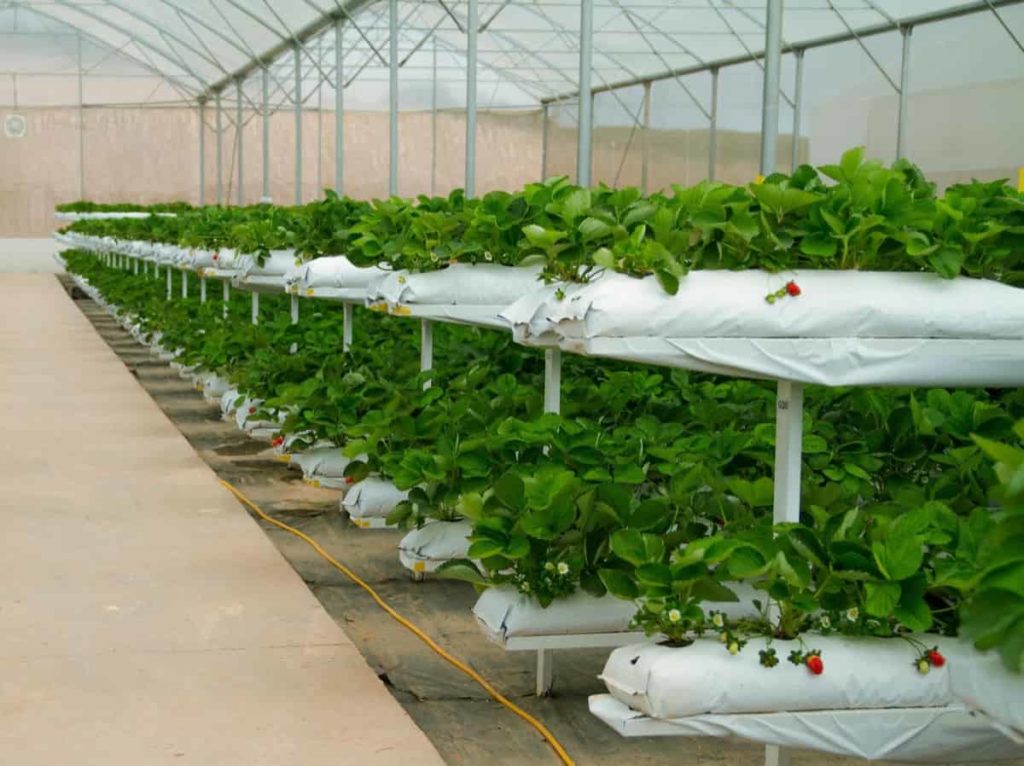
Vertical farm types for more production
- Hydroponic,
- Aquaponic, and
- Based on the growing media system
Hydroponics – Where fruits, vegetables, and herbs are grown in nutrient-rich water. In vertical hydroponic farming, plants are fed an aqueous solution containing all the essential nutrients they need for optimal growth. Examples of this type of vertical farming include modified hydroponics systems, such as nutrient film techniques (e.g., A-frames and vertical growth towers), deep water culture (DWC), and aeroponics.
Aquaponics – where wastewater from fish is used to provide nutrients to plants and, in turn, purify the water. In contrast, fish production is integrated with plant production using a hydroponic system design in vertical aquaponic farming. Instead of fertilizing plants with an aqueous solution containing all the necessary nutrients, plants are alternatively fertilized with nutrient-rich fish water that is filtered, converted to nitrates, and watered. In addition, supplementation is done to limit nutrient deficiencies in systems.
Growing media vertical farms – Finally, in vertical growing media farms, plants are cultivated in soilless media (e.g., Rockwool, coir, perlite, etc.) and then watered with a nutrient solution. Examples of this system include modified ebb and flow, wick, and raised bed systems stacked on each other or moved in vertically designed structures.
Key rules for vertical farming working
The four main factors influencing vertical farming are:
- Layout: As already mentioned, farmers grow crops in tower-like structures to maximize food production while limiting resource use.
- Light: Growers use technologies like rotating beds and a combination of artificial and natural light to ensure maximum light efficiency.
- Sustainability: Vertical farming aims to reduce the depletion of natural resources. As a result, this farming technique recycles irrigation water to reduce usage by up to 95 percent. At the same time, indoor farming requires negligible agrochemicals, thus saving more resources.
- Growing medium: Vertical farming uses soilless agriculture, such as aquaponics, aeroponics, and hydroponics. Growers also commonly use coconut husk and peat moss as growing media.
Effective rules for reducing vertical farm production cost
- Vertical farming can give impressive results and high profits. However, the start-up costs are considerable. One advantage of vertical farming is that it requires less land than conventional farming. However, while the media may lead you to believe that all you need is an empty office block, finding a suitable space for your vertical farm is not as easy as you might think.
- Choose your lights carefully in vertical farms – one of your most significant expenses is lighting, both in terms of initial construction and running costs. Up to 30% of the vertical farm setup cost is lighting. Running these lights will account for at least a quarter of your operational costs.
- And light makes a big difference in how well your crops will grow. By isolating and combining different wavelengths of light, you can create the perfect environment for your crops. That’s why getting your light right from the start is important.
- Buy smart to save on maintenance costs – LEDs must be replaced regularly every five years. In most cases, this means replacing the entire lighting structure. It is estimated that, on average, a vertical farm will take seven years to recoup its initial investment. So it is even more important to ensure you are not hit with an infrastructure bill within five years.
- Crop Selection – Crop selection will affect your farm in more ways than one. Whichever cultivar you choose has its pros and cons. For example, crops with short growth cycles generally require fewer inputs and produce higher yields. Slow-growing, high-value crops (such as saffron or hemp) will fetch higher prices. Some crops have a high impact, reducing the growing space available on the farm. And, perhaps most importantly, you must ensure that there is a market for your chosen crops.
In case you missed it: Top 20 Vertical Farming Companies in India: Best List
Water usage in vertical farming for more production
On average, vertical farms use between 80% and 99% less water than conventional farms. It is because indoor farms use technology to control the growing environment. Because crops are grown indoors, less water is lost through evaporation, and humidity is closely monitored.
Key rules to start vertical farming for reducing production cost
- Choosing crops for vertical farming – Whatever crop you plan to grow will depend on the growing method. It is important to determine each crop’s daily nutrient and light intake. Unlike a regular hydroponic system, there are many more things to consider. Many crops will be grown in layers; there is not as much opportunity for tall plants in this system.
- Choosing your vertical farming method – Different vertical farming methods have pros and cons. They will be more or less suitable depending on crop type, business model, and location. Remember, there is no one-size-fits-all vertical farm model.
- Identify your ideal growing technology – What to grow is the first decision you’ll have to make. The second is how to increase it. Each vertical farming method has advantages and disadvantages and will be more or less suitable depending on crop type, business model, and location. Remember, there is no one-size-fits-all vertical farm model. As a result, this step is highly customizable.
- Get the spacing right – The spacing strategy you use when growing plants indoors is another way to optimize your grams/mole. You want to space the plants so that each one gets as much light as possible, and you’re lighting the plants instead of the shelves they’re on. Knowing the ideal spacing strategy can save you from investing in spacing robots as you can check the supply of additional production spacing plants compared to the investment required for the automation of this strategy. For vertical farm projects, contribute to your business calculations with advice on the best spacing and light composition for each crop. Based on this information, you can decide whether manual spacing or a spacing robot is the most cost-effective choice for your facility.
- Secure financing – Vertical farms often require significant capital investment to start up. Happily, vertical farmers can explore many different funding and financing avenues. This phase introduces participants to some of the most accessible options.
- Deciding on the vertical farm layout – Vertical farming aims to use the available space fully. It is where farmers need to maximize growing potential per square meter. Planning the layout to maximize space utilization is key to doing this easily.
Factors affecting the production costs of vertical farming
- System – The type of system you plan to install for your farm will require its equipment and materials. For example, aeroponic systems mist plant roots with a nutrient solution and require equipment that aquaponic systems, which use live fish for fertilizer, do not, and vice versa. Also, the level of technology your system uses will come with its costs. For example, vertical farms that rely on artificial light for plant photosynthesis consider the efficiency of the light source, other features such as full-spectrum lights or timers, and the number of fixtures needed. Another technical consideration is whether you want Controlled Environment Agriculture (CEA) technology.
- Start-up costs – The facility you choose for your farm will largely determine your start-up costs. A larger operation requires more of everything, and it costs more money. On the other hand, if you’re planning to start a small farm in a space you already own and pay for, such as a spare bedroom, garage, or storage container, this facility doesn’t cost much will come In addition to convenience, equipment will make up a large portion of vertical farming costs. Equipment includes lighting, pH tools, and any other equipment you need for your specific system.
- The more supplies you need, the more expensive it will be. Additionally, high-tech equipment will cost more. It includes growing media, nutrient solutions, and seeds. For aquaponics, consider the cost of the fish and their food. You may need a permit to operate your farm, and there may be a fee for this. Be sure to research local zoning laws before starting.
- Operating costs – Vertical farms consume a lot of energy, especially if artificial light is the only light source for the plants. Small vertical farms spend an average of about $3.45 per square foot on energy, while large vertical farms spend an average of about $8.02 per square foot. Small vertical farms are facilities smaller than 10,000 square feet, while large vertical farms are even larger. Energy costs depend on the efficiency of the bulb. Higher efficiency bulbs will produce more light for less electricity, ultimately costing less in the long run.
- Labor is another recurring vertical farming cost. Even small farms require labor to operate. The big question is whether you will be doing it all yourself or hiring others. The salaries and benefits you give employees and how many employees you have will affect the amount you pay for labor. Indoor vertical farms spend 56% of their operating budget on labor, about $20.78 per square foot. Also, you have to factor in the material costs like growing media, seeds, and nutrient solutions, which typically account for 11% of a vertical farm’s budget.
In case you missed it: Vertical Farming Scheme from Government: How to Get up to 75% Subsidy
Tips for more products in the future of vertical farming
In addition to providing fresh local produce, vertical agriculture can help increase food production and expand agricultural operations as the world’s population is expected to exceed 9 billion. And by the same year, two out of every three people are expected to live in urban areas.
Vertical farming uses far less land, energy, and water than conventional farming, at least in theory. And by perfecting the conditions inside the facility, vertical farmers can produce higher plant yields. Another great advantage of these methods is that they can be performed anywhere with absolute precision.
Conclusion
Vertical farming helps to grow various fruits and vegetables in hilly towns, deserts, and cities like skyscrapers by using precise farming methods. Creating a vertical farm is relatively easy. Place crops vertically on top of each other in a closed and controlled environment. By controlling variations in temperature, light, humidity, and gases to produce, farmers can increase yields while reducing resources and costs from traditional farming. Above mentioned tips help to get more production in vertical farming.
- Economical Aquaculture: A Guide to Low-Budget Fish Farming
- 15 Common Planting Errors That Can Doom Your Fruit Trees
- How to Make Houseplants Bushy: Effective Tips and Ideas
- Innovative Strategies for Boosting Coconut Pollination and Yield
- Pollination Strategies for Maximum Pumpkin Yield
- The Complete Guide to Chicken Fattening: Strategies for Maximum Growth
- Natural Solutions for Tulip Problems: 100% Effective Remedies for Leaf and Bulb-Related Issues
- Revolutionizing Citrus Preservation: Towards a Healthier, Greener Future
- Natural Solutions for Peony Leaf and Flower Problems: 100% Effective Remedies
- Maximizing Profits with Avocado Contract Farming in India: A Comprehensive Guide
- Natural Solutions for Hydrangea Problems: 100% Effective Remedies for Leaf and Flowers
- The Ultimate Guide to Choosing the Perfect Foliage Friend: Bringing Life Indoors
- From Sunlight to Sustainability: 15 Ways to Use Solar Technology in Agriculture
- The Ultimate Guide to Dong Tao Chicken: Exploring from History to Raising
- The Eco-Friendly Makeover: How to Convert Your Unused Swimming Pool into a Fish Pond
- Mastering the Art of Delaware Chicken Farming: Essentials for Healthy Backyard Flocks
- 20 Best Homemade Fertilizers for Money Plant: DIY Recipes and Application Methods
- How to Craft a Comprehensive Free-Range Chicken Farming Business Plan
- Brighten Your Flock: Raising Easter Egger Chickens for Beauty and Bounty
- How to Optimize Your Poultry Egg Farm Business Plan with These Strategies
- Subsidy for Spirulina Cultivation: How Indian Government Schemes Encouraging Spirulina Farmers
- Ultimate Guide to Raising Dominique Chickens: Breeding, Feeding, Egg-Production, and Care
- Mastering the Art of Raising Jersey Giant Chickens: Care, Feeding, and More
- Ultimate Guide to Raising Legbar Chickens: Breeding, Farming Practices, Diet, Egg-Production
- How to Raise Welsummer Chickens: A Comprehensive Guide for Beginners
- How to Protect Indoor Plants in Winter: A Comprehensive Guide
- Ultimate Guide to Grow Bag Gardening: Tips, Tricks, and Planting Ideas for Urban Gardeners
- Guide to Lotus Cultivation: How to Propagate, Plant, Grow, Care, Cost, and Profit
- Agriculture Drone Subsidy Scheme: Government Kisan Subsidy, License, and How to Apply Online
- Ultimate Guide to Raising Araucana Chickens: Breed Profile, Farming Economics, Diet, and Care
- Bringing Hydroponics to Classroom: Importance, Benefits of Learning for School Students
- Ultimate Guide to Raising Polish Chickens: Breed Profile, Farming Economics, Diet, and Care
- Ultimate Guide to Raising Australorp Chickens: Profile, Farming Economics, Egg Production, Diet, and Care
- Silkie Chicken Farming: Raising Practices, Varieties, Egg Production, Diet, and Care
- Sussex Chicken Farming: Raising Practices, Varieties, Egg Production, Diet and Care
- Homemade Feed Formulations for Livestock: Discover Cost-effective Starter to Finisher Feed Recipes
